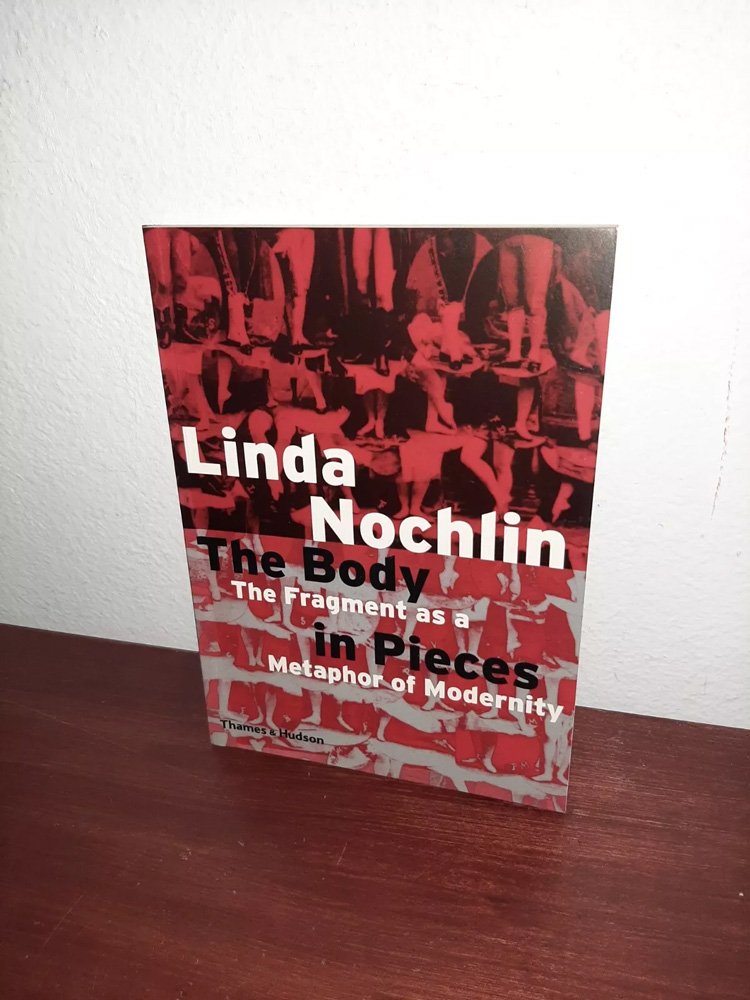What Would Linda Nochlin Say?
Within my current art practice, two types of body prints appear to be made. Some show just a section of my body going beyond the frame of the plate, and in others, my body print is centrally surrounded by an abundance of negative space. So, what is this about?
In search of interpretations of my work, I came across Linda Nochlin's “The Body in Pieces: The Fragment as a Metaphor of Modernity.” For those less in the know, Linda was a “trailblazing feminist art historian” who passed away in 2017.
In this book, she interprets artworks in which the body is in parts or cut off by the edge of the frame. Traditional readings of such artworks suggest suffering, predominantly from war or political acts. The modern understanding of fragmentation has become sexualised, suggesting what is beyond the frame.
Linda asks questions:
‘What of the larger implications of the topic, what of the sense of social, psychological, even metaphysical fragmentation that seems to mark modern experience, a loss of wholeness, a shattering of connection, a destruction or disintegration of permanent value that is so universally felt in the nineteenth century as to be often identified with modernity itself?’(p23-24)
She quotes Karl Marx:
‘“All that is solid melts into air, all that is holy is profaned and men at last are forced to face… the real conditions of their lives and their relations with their fellow men.” This is Karl Marx, in The Communist Manifesto, speaking at mid-century of the dynamic destructiveness and self-disintegration in the capitalist system and bourgeois society more generally.’ (p24)
Although this book is now 30 years old, all her points seem more relevant: the suffering and oppression of women and how capitalism continues to destroy our society. We only have to look to the recent presidential election in the US and the party's views on woms ’s rights and how this is becoming a highly charged political issue.
On the other side of the pond, here in the UK, Keir Starmer has pledged to “finally tackle the scrouge of violence against women and girls” but is aware of how complicated this will be considering misogynist influencers.
Currently, statistics show that women have a complex relationship with their bodies in our society…
1 in 4 women in the UK will be raped in their lifetime, and 1 in 4 women will experience domestic violence. Only 1-2% end in prosecution. The lack of justice speaks all too clearly about female oppression and that post-feminism is yet to be achieved.
In the UK beauty and cosmetics industry, 93% of cosmetic procedures are performed on women, and 9% of the female population in the UK has had cosmetic surgery compared to 1% of men. The beauty industry in the UK generated £27.2 billion in sales in 2023, an 11% increase from the previous year. There’s profit in our suffering; nothing is better for capitalism than manufactured insecurity.
Self-harm and eating disorder statistics continue to rise, and both are more prevalent in females.
It’s essential to have balanced views on these issues; they affect men, too, just not to the same extent. 1 in 18 men in the UK will be raped in their lifetime, and 1 in 6 men will experience domestic violence.
I have also discovered a UK charity: White Ribbon is the UK’s leading charity engaging men and boys to end violence against women and girls. White Ribbon Day is 25th November 2024; check out their website: https://www.whiteribbon.org.uk/ and see how men can get involved.
So, returning to what Linda Nochlin would say, do you think these ideas fit my prints? There certainly seem to be suggestions that they’re relevant.
References:
https://www.cosmeticsdesign-europe.com/Article/2024/08/22/UK-beauty-sales-up-by-11-in-2023/
https://labour.org.uk/wp-content/uploads/2024/06/Change-Labour-Party-Manifesto-2024-large-print.pdf p62
“Linda Nochlin, Trailblazing Feminist Art Historian, Dies at 86.” ARTnews. https://www.artnews.com/art-news/news/linda-nochlin-trailblazing-feminist-art-historian-dies-at-86-9232/. Accessed 22 Nov. 2024
Nochlin, Linda. The Body in Pieces: The Fragment as a Metaphor of Modernity. Thames and Hudson, 1994.
